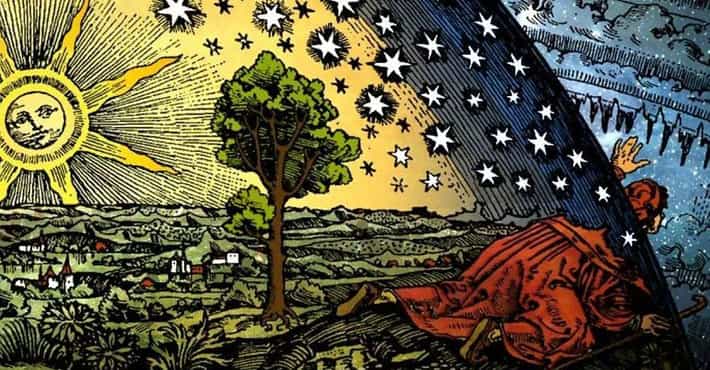
It is a popular opinion that in the Middle Ages, before the great geographical discoveries of the 15th and 16th centuries, the Earth was believed to be a flat plate.
The appearance of the so-called flat earthers in recent times and the spread of this pseudoscientific theory through social networks only revived existing prejudices. However, judging by the available historical sources, the view that medieval people imagined the Earth as a plate is completely wrong. Of course, we can only guess what the uneducated layers of society thought about it, but most educated people saw the Earth roughly as we know it today.
The earth was perceived as a sphere by ancient writers and philosophers such as Pythagoras, Plato and Aristotle. Their views were also adopted by medieval scholars, from Basil the Great, Bede the Venerable, Isidore of Seville to Dante Alighieri. Although until the 8th century, examples of belief in a flat Earth could be found sporadically, after that time the shape of the sphere became almost unquestionable. Entire books depicting the Earth as a sphere, which were read with pleasure in European universities, were published between 1200 and 1500. One of them, De sphaera mundi by Jovan de Sacrobosc, written by Fr. 1230 AD, talks about the different appearance of the stars from different positions on Earth. Truth be told, not everyone agreed on what life was like on that globe. Beda believed that no one lived in the southern hemisphere, because, in the absence of knowledge of gravity, it was difficult to understand how people from the southern hemisphere remained on the surface of the Earth. The form, however, was not in dispute.
What medieval people really believed in was the thesis of the Earth as the center around which the other heavenly bodies revolve. The theory of man as the most important creature in the entire universe is often cited as the reason for such a belief. Belief, however, was primarily formed based on what people could infer by looking at the sky above them. In addition, they found support in the works of ancient philosophers such as Aristotle.
Where, then, did the view that medieval people were mistaken about the shape of the Earth come from? There are several reasons and most of them are related to the 19th century. The first lies in the then widespread idea of the Christian church as a breeding ground of ignorance that hinders the development of science. This kind of thesis is considered outdated in science today, but at the time it was closely related to the idea of the progress of human society, according to which the modern age represented the peak of human achievements, and the Middle Ages the dark age. A key reason for the popularity of the considered fallacy was the influence of the book A History of the Life and Voyages of Christopher Columbus by the American writer Washington Irving, printed in 1828. At first glance, the book seems like a biography of Columbus, but it is full of fictional stories. According to Irving, theologians and scholars at the time of Columbus opposed geographical discoveries, defending the idea of the Earth as a flat plate. Irving’s views have their roots in a narrative that was used in the 17th century in the debates between Protestants and Roman Catholics, and whose goal was to portray the Catholic Church as backward. The story has become widely popular since the appearance of Irving’s book, as well as several of the latter, which during the 19th century contrasted science and religion in the midst of the struggle between Darwinism and creationism.
Already in the twenties of the last century, and especially in the previous few decades, historians rejected this belief as historically unfounded. Nevertheless, according to Geoffrey Russell, who devoted an entire book to the history of this fallacy in 1991 (Inventing the Flat Earth: Columbus and Modern Historians), it persists in the consciousness of a large number of people because of the feeling of superiority it gives us compared to previous generations. In the American context, it further persists because of the popular view of the Middle Ages as Catholic versus the Protestant New Age, with all the attendant prejudices.
Leave a Reply
You must be logged in to post a comment.